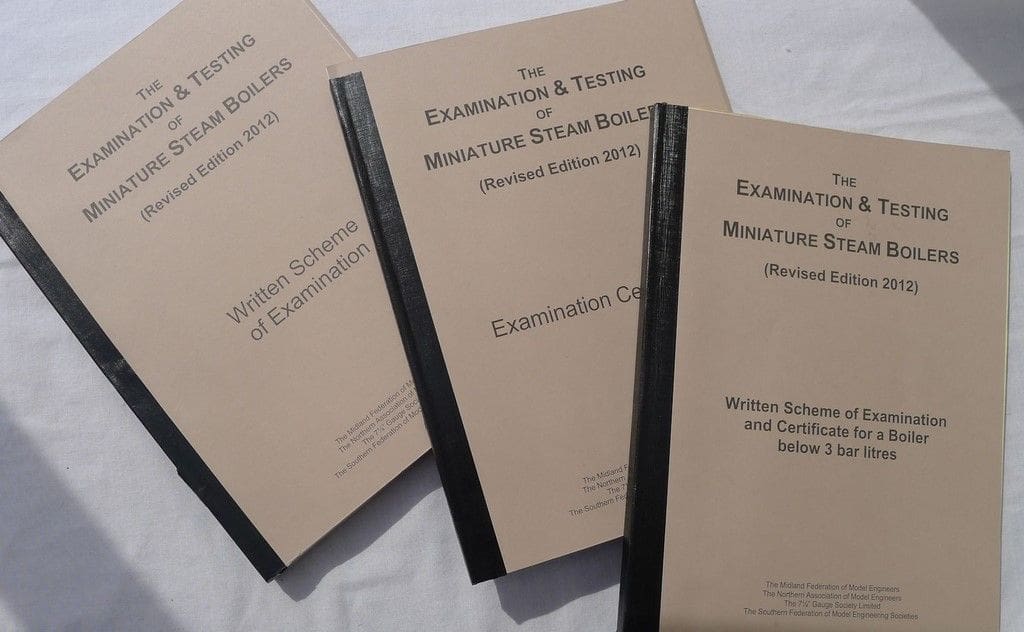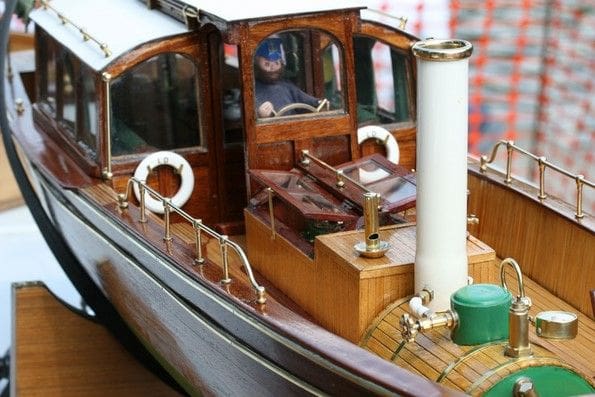Part Thirty Seven: The Green Book, Part One
Looking back through my records I was surprised to see that it is now over two years since I did a column on Boiler Test Regulations in Boiler Room No.10 (October 2011 MB), so in conjunction with the introduction of a brand new revised edition of the old ‘Blue Book’, I think makes it about time we had another look at what is required. I think the easiest way is to have a look at the old Blue Book side by side with the new revised edition ‘The Green Book’, and see just what changes have been made and what it means to us as steam modellers, Photo 1.
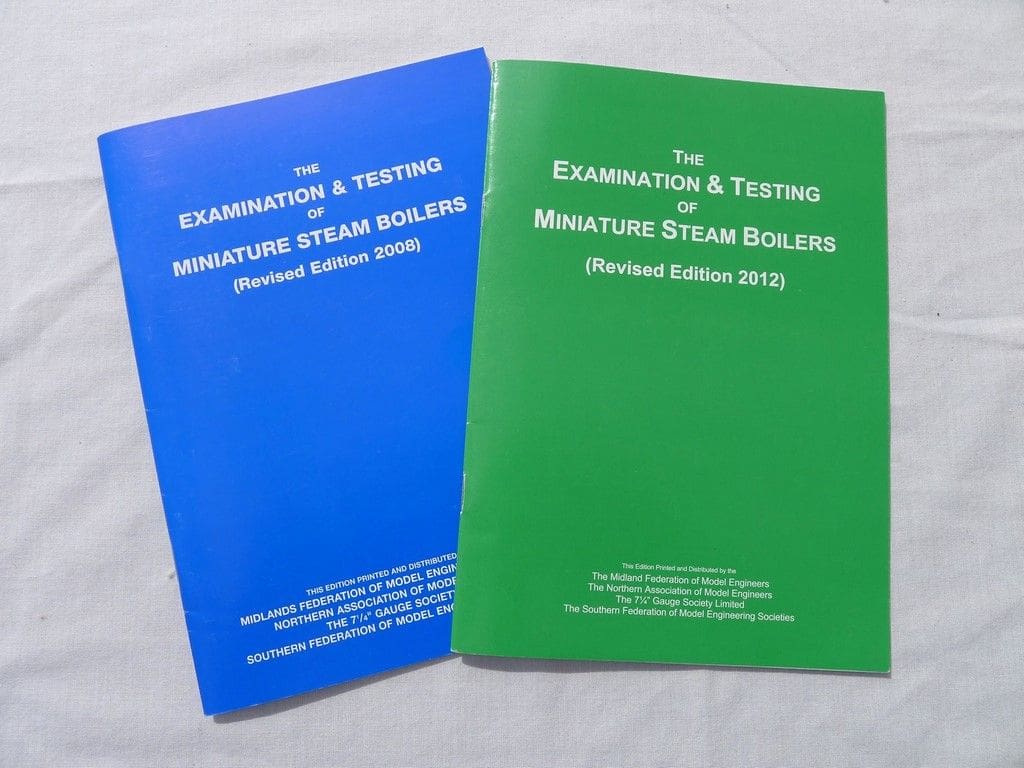
The Green Book is distributed by the following organisations in the UK:
Enjoy more Model Boats Magazine reading in the monthly magazine.
Click here to subscribe & save.
The Midland Federation of Model Engineers
The Northern Association of Model Engineers
The 7 1/4 Gauge Society Limited
The Southern Federation of Model Engineering Societies.
To operate steam models, a model boat club insurer will usually want it to be a member of one of these organisations and be able to produce evidence of the fact that they follow the rules and certification process that supports the Green Book, or be an affiliated member of The Model Power Boat Association (MPBA) and follow their own code of practice. As an example of this, Kirklees MBC is a member of The Southern Federation of Model Engineering Societies and here in Photo 2 we have some of our on the water activity which includes many steam powered models.
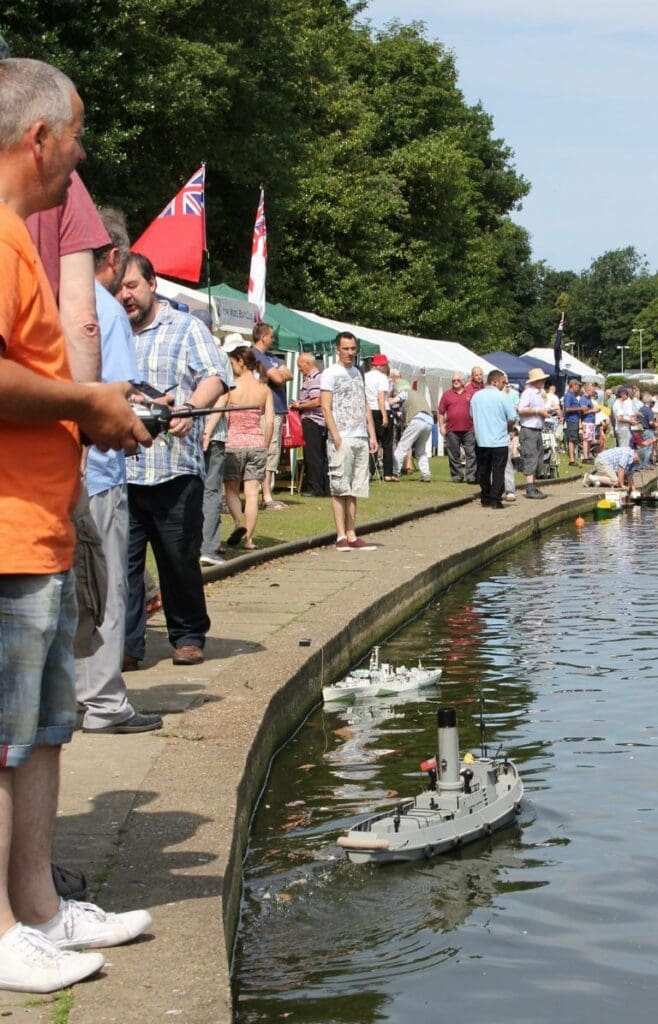
A bit of history
Obviously not wanting to repeat myself, it is however still worthwhile just having a very brief look at what got us to where we are today. Before 1st January 2006, all relevant organisations involved with model boat steam plants such as the insurance companies, clubs, local councils and the Health and Safety Executive, all had their own sets of rules. This made for an understandable level of confusion and resulted in many modellers and organisations simply ignoring what was in place. Consequently these organisations got their heads together and put together a set of rules which came into effect on 1st January 2006, written up as what became known as ‘The Blue Book’. These rules were accepted by the Health and Safety Executive, most of the big insurance providers and most modelling organisations, and therefore made it all a significantly more simple set of rules to follow and enforce. The Model Power Boat Association (MPBA) insisted on maintaining their own set of rules and did not sign up to ‘The Blue Book’, but their members are covered by their own third party insurance, provided they comply with the rules!
The Blue Book regulations set out the requirements for two completely different and clearly defined tests, namely the Boiler Hydraulic Pressure Test and the Steam Test. The challenge with the first set of regulations from 2006, was the 1.5 bar-litre requirement, which basically stated that anything larger than this required regular hydraulic pressure testing, Photo 3, which is of a Wilesco boiler.
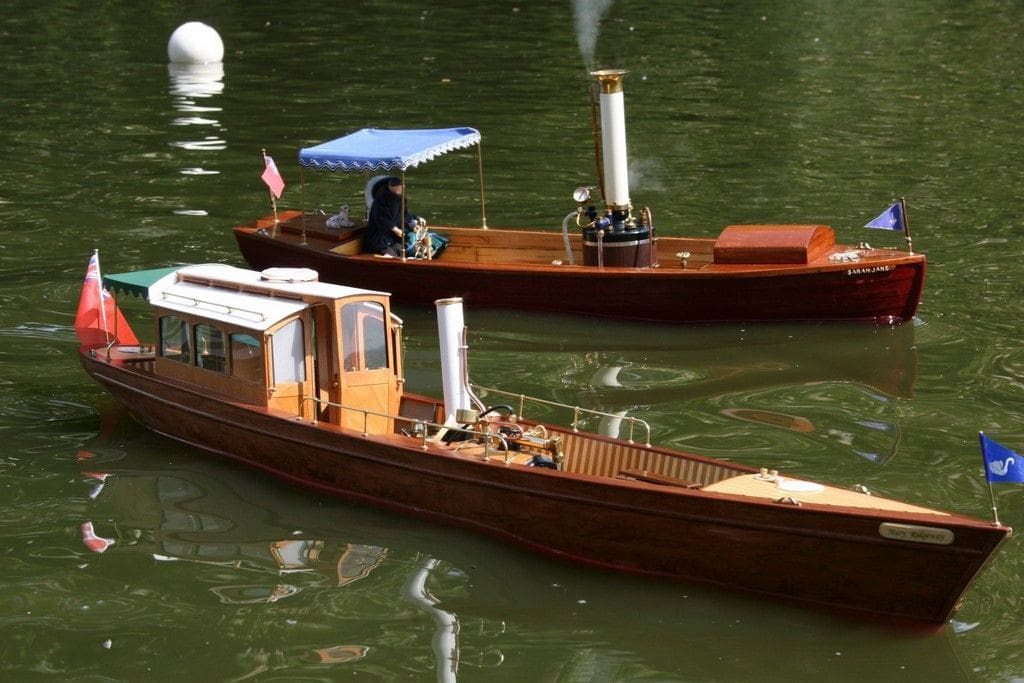
The bar-litre number for a model boiler is explained as follows, but was covered in detail in Boiler Room No. 36 in December 2013 MB. If you calculate or measure the capacity of your boiler as the total internal volume in litres and multiply it by the working pressure in bar, you will find you own bar-litre figure. Thus, a boiler of 500ml capacity and a working pressure of 4 bar is nominally 0.5 x 4.0 which means it is a 2 bar-litre boiler.
A limit of 1.5 bar-litres in 2006 unfortunately meant that basically most model boat boilers apart from those of the very small Mamod and Wilesco type, or other ‘toy’ boilers, required regular pressure testing and this led to a large number of complaints.
Consequently in 2007, there was a reassessment of the requirements and the bar-litre rule was reset at 3 bar-litres, which now meant that about 80 to 90% of model boat boilers were below this level anyway and therefore did not require periodic hydraulic pressure testing. So then, if your boiler was less than the 3 bar-litre limit, you were exempt from the hydraulic pressure testing regulations, but it was still recommended that safety valves were tested at least once every 12 months and the boiler and pipework installation was also checked at least once every 12 months. In other words, this was basically recommending that a steam test be performed every 12 months, Photo 4, of a Clyde boiler.
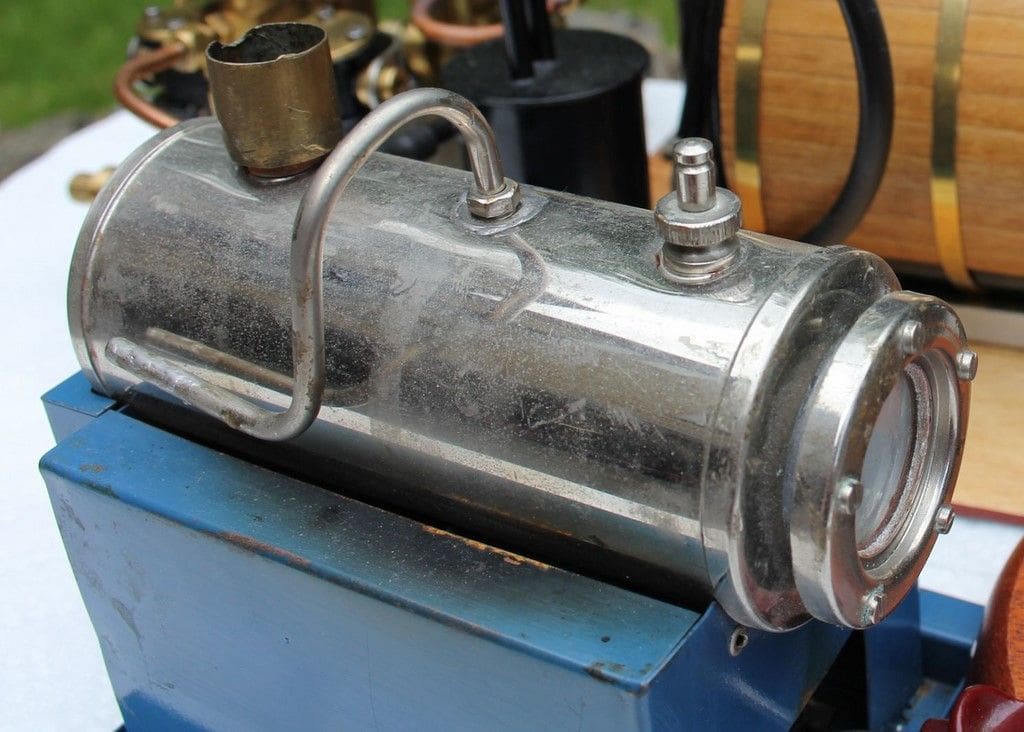
As of the 1st January 2013, the latest revision came into effect and we are now covered by the requirements of ‘The Green Book’ set of rules. So let’s have a look at what has changed.
The changes
Although there are many out there who prefer to throw their hands in the air and claim ‘doom and gloom’ for the steam enthusiast, the bottom line is that there is very little in the way of practical change and most of The Green Book has simply been rewritten to clarify some of the requirements. Probably the first thing you will come across when comparing the two books is the fact that boilers below the 3 bar-litre limit used to be exempt from the requirements of the code, but with recommendations, and these are now actually included in the code. From what I have read on internet forum sites, there are some who see this as more restrictive, however to me what was being recommended was reasonable and easy to maintain and most clubs require the steam test to be done anyway, so now becoming ‘requirements’, makes little practical difference. So, now the regulations state that we have to do a steam test on boilers annually, which I have to say is not a bad idea. It is a ten minute procedure and involves a calibration check of the pressure gauge, an operational test of the safety valve, plus a visual inspection and Photo 5 here shows the basic test apparatus.
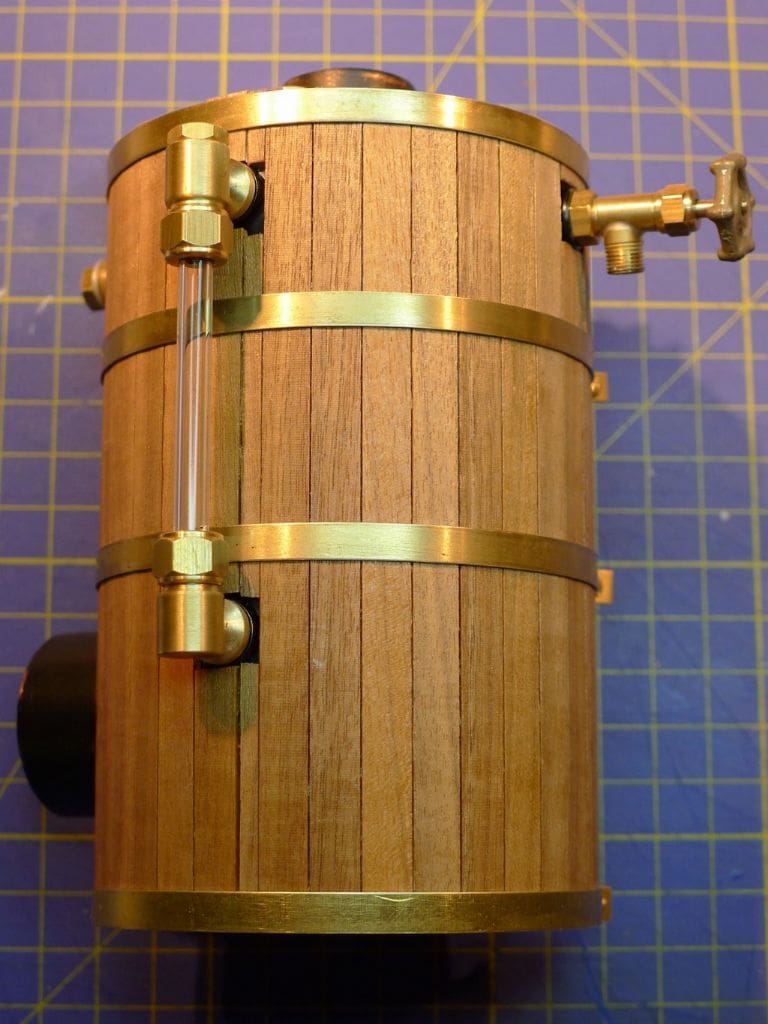
Looking a bit further through the two books the section entitled Purpose is slightly more elaborated in the Green Book and the section entitled Definitions goes into more detail as regards the requirements of the Inspector. I have had a chat only recently with some steam modellers who are disappointed that their own club does not have an Inspector nor anyone that seems to be willing to perform this task. The Green Book clearly lays down just what is required of an Inspector and therefore helps any steam modeller to get themselves set up to be able to do tests in their own club. It also gives much better guidance to these inspectors as to what to do in the event of not being wholly satisfied when conducting a test; what the requirement of a witness is and an explanation of just what the Written Scheme of Examination is all about. This is probably one of the biggest changes over and above the old rules as now a Written Scheme of Examination (WSE), has to be written for every steam plant, Photo 6. The WSE only needs writing out once, and then remains with the boiler unless anything significantly is changed on it, or the steam vessel changes hands. The WSE basically states the key details of the boiler; what type of tests are required on it and their frequency, so in other words it is a sort of log book.
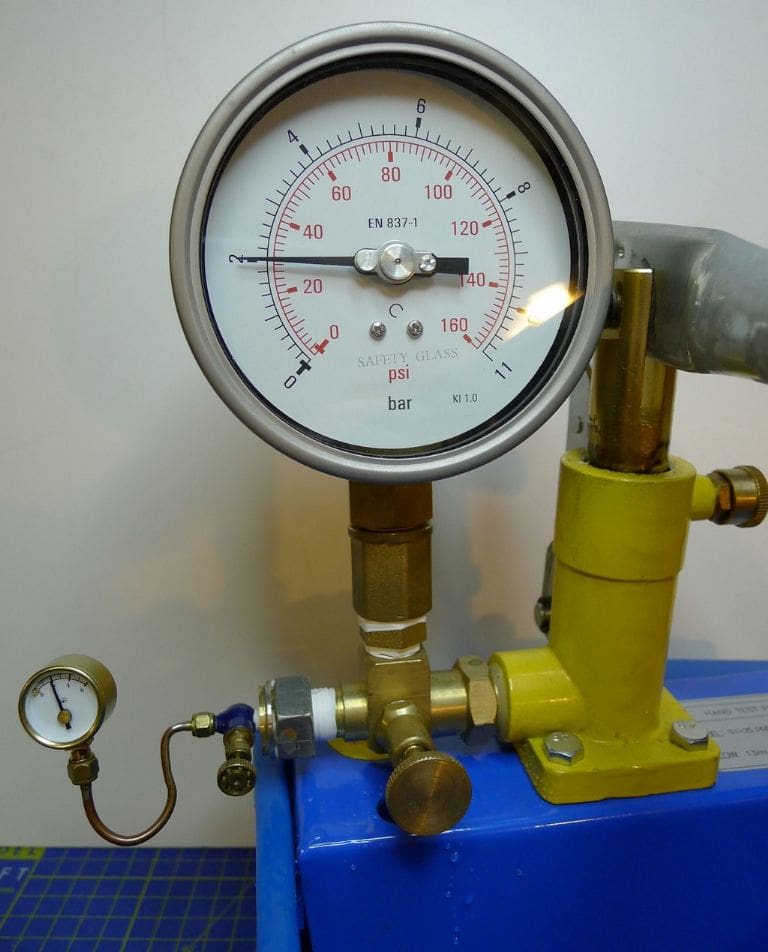
The next section entitled Application covers just what types and sizes of plant require testing and now quite clearly states that boilers below the 3 bar litre limit are required to be put through an Annual Steam Test. It also states that stainless steel boilers are not covered and interestingly it also states that Inspectors or Clubs cannot charge for the services of testing boilers. It also gives reassurance for inspectors in that they are not obliged to conduct any test that they do not feel comfortable in doing, for whatever reason, and so may help to relieve some of the pressure (pun there!) felt by inspectors to conduct tests on old, homemade or unknown boilers.
Design Verification Section
This an interesting one and one that modellers should pay particular attention to when presenting their home-built models for examination. Many seem to expect that the examiner will accept anything presented to him (or her), but they are going to now need to verify that the boiler has been made to a reliable established design that includes the dimensions it should have been built to and the resulting working pressure. Nothing else can be done without this information and it remains the responsibility of the builder (or boiler owner) to produce such credible substantiating evidence as to the design and its working pressure.
So, before even contemplating a test, an inspector needs to know the working pressure and the capacity of the boiler and all too often this information isn’t available on the day. If you don’t know these things, it is not possible for an inspector to decide whether a boiler is above or below the 3 bar-litre limit and therefore:
a) What tests are required
b) What the set pressure for the safety valve should be
So, the lesson is that when presenting a boiler for test, all the relevant data should be to hand, and that applies whether it is home-built or commercially purchased.
Next month we will continue looking through the Green Book to identify any further changes and what they may mean to us as steam modellers.
